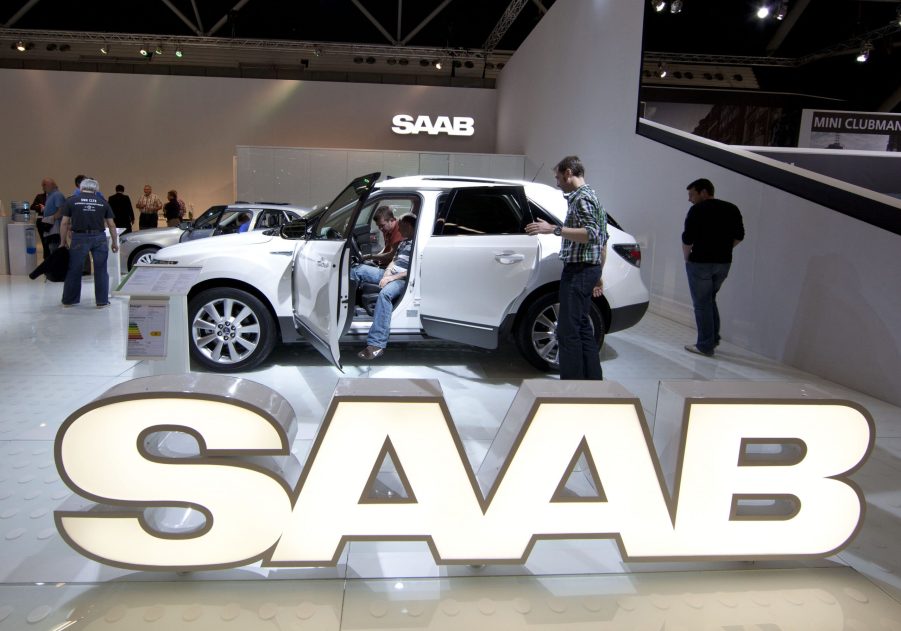
Partnering With GM Was Saab’s Worst Mistake
Whatever happened to Swedish automaker Saab? A series of unfortunate financial decisions forced the unconventional automaker to enter into a partnership with General Motors in the late ’80s. And it was downhill from there.
What exactly happened to Saab to force it into the partnership? What ultimately did the automaker in?
A Saab story

In 1989, due to market conditions at the time and a series of poor financial decisions, Saab found itself on GM’s radar in 1989 according to Automobile Mag. At first, GM had a 50% investment in the Swedish automaker. Its early decisions were the beginning of the end for Saab.
GM ordered the engineering team at Saab to translate the design language for its 900 coupe/sedan/convertible to the GM2900 platform. Having Saab take an aging design and graft it onto another design as opposed to allowing the Swedish company to develop an in-house replacement for the 900 was a poor decision.
When the new Saab 900 launched in 1994, the GM2900 platform was itself aging and had been around since 1988. GM shoved the company into a luxury brand segment with BMW, Mercedes-Benz, and other top-selling luxury brands whose modern models it just couldn’t compete with.
In 2002, the next version of the 9-3 released using the same GM Epsilon platform used for the Pontiac G6 and Chevrolet Malibu. GM hung it out to dry until Saab’s demise in 2010. It made virtually no changes or investments in the vehicle, according to Automobile Mag.
The 9-3 simply couldn’t compete with the likes of the E46 BMW 3 series according to Automobile Mag. It received nothing new to draw new fans or hold onto existing ones.
Stripping away Saab’s identity
By the time GM was done, Saab had little of its Scandinavian identity left. Automobile Mag claims, GM lightly reskinned third-party models and attempted to pass these off as a “renaissance.”
The 9-3 was joined by the Saab 9-2X in 2005 which was basically a Subaru Impreza hatchback knock-off. GM was able to use the 9-2X Aero to entice a minuscule number of customers into paying for a more expensive Impreza WRX.
And that was just the first of many shots GM took at the Swedish automaker. The 9-7X came along in 2005 and it was basically a Chevrolet TrailBlazer thinly disguised as a Saab. It’s high price tag discouraged loyal Saab fans.
Before long and facing its own bankruptcy, GM realized the mess it made of Saab and started looking for a way out. A final Saab model was released: the Saab 9-5. While it still used the Epsilon II platform, the updated 9-5 was the first Saab model under GM that caught the eye of luxury car enthusiasts.
Available as sedan or wagon, the 9-5 featured a beefy turbocharged V6 engine with an advanced AWD configuration. Saab had something between the stylish 9-5 and the 9-4X luxury crossover. Maybe enough to salvage the company?
Not so fast. The debut of the new 9-5 was overshadowed by GM’s announcement in 2010 that the company was being sold to Dutch supercar builder Spyker.
The new parent company had a problem getting American parts and expertise. It also fell prey to the aggressive habits of Chinese financiers. After that, very few 9-5 models were produced, with much less making it to U.S. highways.
The end of the automobile division of the company
Saab’s brief time with Spyker ended abruptly in bankruptcy in 2011. The National Electric Vehicle Sweden (NEVS) bought the company’ss assets. In truth, NEVS was a front for a Chinese investor group who wanted to take the 9-3 and give it an electric powertrain.
GM was unwilling to share technology and Scania AB, who legally controlled Saab’s griffin logo, didn’t cooperate so the plans didn’t get far.
After receiving a large sum of money from Evergrande Group, NEVS tried to peddle the 9-3-like EV sedans in China. But Automobile Mag says a number of false starts and the fact that the 9-3 is now a couple of decades old hampered the effort more and more.
While Saab has seen an almost zombie-like afterlife in the auto industry and never really got the proper farewell it deserved.


